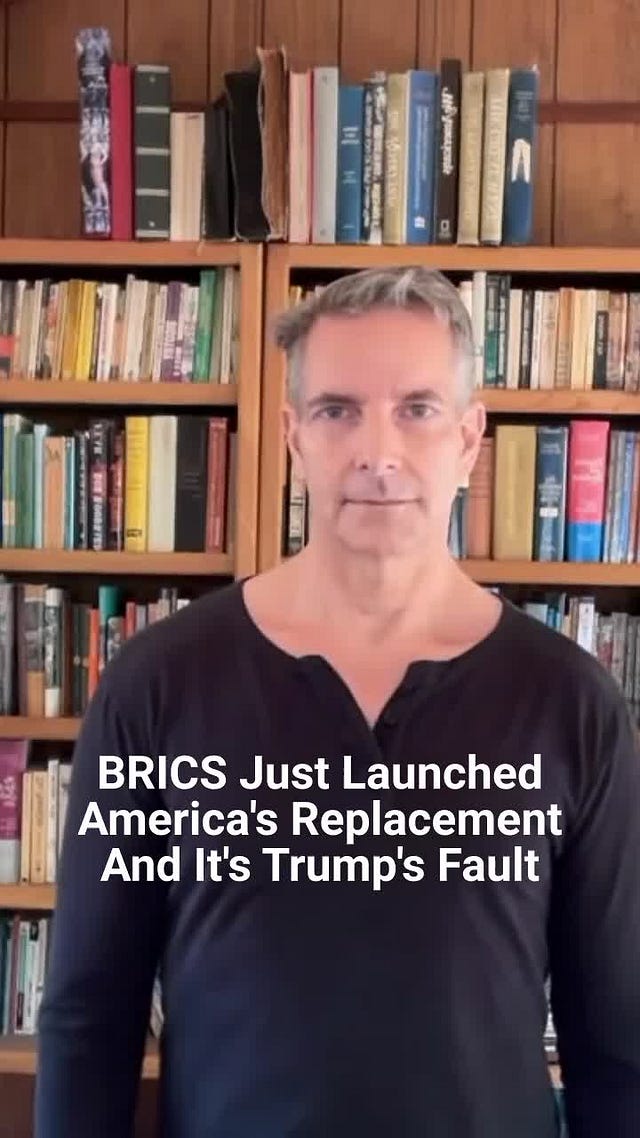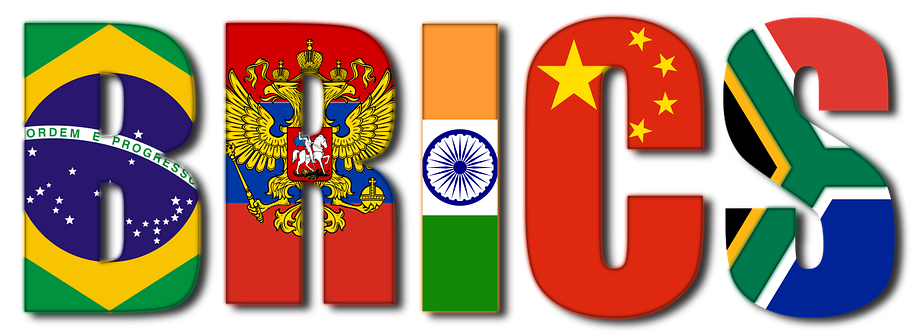Core Brief: The BRICS Challenge - Why the US is Worried and Trump Panicked
A new global order is taking hold—and Washington can't control it.
BRICS is a force that the US can no longer hold back. And American rhetoric and actions show the US is worried.
US President Trump threatened 10% tariffs on any country aligning with BRICS “anti-American” principles (ironically, it is Trump’s tariffs that have accelerated BRICS’ rise). When current BIRCS president Brazil’s Luiz Inácio Lula da Silva said about Trump, "The world has changed. We don't want an emperor." Trump put a 50% tariff on Brazil. It was a panic move.
For decades, the United States and its allies controlled the levers of international power: loans came with strings, aid came with lectures, and diplomacy came with demands. The US and its allies provided aid, but it was on unequal terms and required nations to align themselves with US interests and a loss of some sovereignty.
BRICS is different. It’s an organization of the nations, by the nations, for the nations. There are no permanent leaders. No weighted votes. No conditions hidden in contracts. It’s a partnership, consensus, and a shared goal: economic independence without political interference.
And it’s working.
What’s Happening
A New Power Bloc
The BRICS group, Brazil, Russia, India, China, and South Africa, was formalized in 2009 and now includes Ethiopia, Egypt, Iran, Saudi Arabia, and the United Arab Emirates. Argentina declined its invitation in 2024. Each member rotates into a leadership role, and decisions are made by consensus, not by majority or military weight. The member nations represent almost half of the world’s population and 40% of global GDP.
Non-member ‘partner’ nations are Belarus, Bolivia, Cuba, Kazakhstan, Malaysia, Nigeria, Thailand, Uganda, and Uzbekistan. More than 30 countries have expressed interest in joining.
The BRICS Bank: a Rival to the IMF
The New Development Bank, founded in 2014, funds infrastructure across the Global South with no strings attached. Unlike the International Monetary Fund and World Bank, voting power is evenly shared among the founding members. Loans are driven by project needs, not by conditional changes in the receiving country’s financial or political structure.
A Parallel Emergency Fund
In 2015, BRICS created a $100 billion reserve pool to help member nations through financial crises. It’s similar to the IMF’s Special Drawing Rights, but without the Western conditions. China provides the largest share, but no single country dominates.
Expansion with a Purpose
The new members aren’t random. They’re strategically located in the Middle East, Africa, and Asia, regions with critical resources and rising influence. For many, joining BRICS means breaking free from US control.
The US Playbook Still Dominates
The US approach combines the International Monetary Fund, World Bank, U.S. Agency for International Development, sanctions, and military backing. These tools are tied to reform packages: cut social spending, open markets, change leadership, or lose funding. That system still exists, but it’s losing ground as the US is becoming increasingly unreliable and demanding.
Why It Matters
BRICS isn’t just another economic group. It’s the next shift in the global order. A shift from US domination to equality among nations and a shift from US-Western power to Southern power.
Instead of aid with conditions and forced reforms, it offers investment based on need without loss of sovereignty. It’s a substantial cultural shift from American practices, thinking, and view of the world to cultural dimensions more common throughout the world.
One system is not better or worse, nor is it about liking or disliking the West. It’s about needing an alternative.
And the fact that BRICS is gaining members proves something fundamental: The US led system is not working for everyone. One size does not fit all
The Cultural Perspective
For 80 years, global institutions operated through a Western, highly American cultural perspective. BRICS is a more global cultural perspective.
From Individualism to Collectivism
Western systems reward nations based on individual performance. BRICS emphasizes mutual benefit and shared development. Decisions are made by consensus. There’s no permanent leader; rather, rotating responsibility. National interest is tied to collective strength.
From Short-Term Orientation to Long-Term Vision
International Monetary Fund loans often demand rapid reform and quick compliance. BRICS lends for infrastructure and sustainable growth, projects that may take decades to bear fruit. It’s a pivot from quarterly outcomes to generational impact.
From Achievement to Nurturing
Western institutions operate through an achievement cultural perspective, competition, performance metrics, and dominance define success. BRICS shifts toward a more nurturing cultural perspective: cooperation, support, and development rooted in collaboration. It favors relationships, communities, and views harmony as progress.
From Specific to Diffuse
Western institutions separate the personal from the professional: a clear line between aid, business, and diplomacy. BRICS blends them. State visits are tied to infrastructure deals, cultural exchanges, and energy partnerships. Personal trust carries across domains, not just contracts.
From Sequential Time to Synchronic Time
Western diplomacy follows strict timelines, deadlines, disbursements, and evaluations. BRICS moves more fluidly. Meetings stretch. Agreements unfold. Trust develops over time, not at the stroke of a pen.
From Internal Control to External Adaptation
The US model assumes control: if you change policies, you change outcomes. BRICS cultures accept complexity. They emphasize flexibility, adaptation, and working with the political, social, and economic environment.
From Low-Context to High-Context Communication
In Washington or Brussels, success hinges on what’s written. In BRICS, it’s often what’s understood. Negotiations rely on relationship history, shared values, and subtle cues. A deal isn’t always explicitly stated.
Hornby: from the Sage and Power-Seeker to the Worker and Caregiver
[More about the archetypes here]
Western led institutions are rational, rules-driven, and authority-focused, typical of the Sage and the Power-Seeker archetypes. These archetypes built systems grounded in expertise, hierarchy, and technical dominance.
BRICS is shaped by the Worker and Caregiver archetypes. It is practical, relationship-based, and deeply rooted in survival and empathy. BRICS nations do not seek to dominate the global order; they seek to rehumanize it, building infrastructure, providing mutual aid, and nurturing sovereign development.
It’s a new way to think about power, progress, and partnership that changes the rules for everyone.
What’s Next?
More countries are lining up to join BRICS or partner with its financial arms. The global South no longer faces the dilemma of obeying the conditions or not receiving aid.
As BRICS expands and offers credible financial alternatives, nations have choices. The world is diversifying, and this is what worries the US and caused Trump to panic. When nations are no longer dependent on the US, the US loses its power.
We are at the threshold of a new New World Order.
Join us on TikTok for more about BRICS and cultural perspectives

 Tiktok failed to load.
Tiktok failed to load.Enable 3rd party cookies or use another browser


